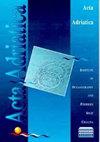The diet of the anchovy Engraulis encrasicolus (Linnaeus, 1758) during the spawning season in the eastern Adriatic Sea
IF 0.6
4区 生物学
Q3 MARINE & FRESHWATER BIOLOGY
引用次数: 2
Abstract
The objective of this study was to determine, both quantitatively and qualitatively, the variability in the diet of the anchovy, Engraulis encrasicolus, during its spawning period. Samples were obtained from commercial purse seine catches (April 2014 – September 2016) from coastal and offshore fishing areas of different trophic states and zooplankton composition over the eastern Adriatic Sea. In general, decapod larvae comprise the main source of diet during the anchovies’ spawning period in terms of frequency and abundance, followed by calanoid copepods. The main copepod prey that was identified for anchovy along the eastern Adriatic coast was calanoid Temora stylifera, followed by Oncaeid copepods and Corycaeidae. Although no significant differences in diet composition regarding the anchovy’s size was observed, the contribution of copepods decreased in larger individuals, and were gradually substituted by large crustaceans decapods, euphausiids, mysids and amphipods. However, a significant difference in prey composition between coastal and offshore areas was observed (global R=0.164, p<0.05). Beside adult copepods, offshore water anchovy fed mainly on decapod larvae and their megalopa stage, and amphipods. In the stomach of the fish caught in the coastal waters, higher contributions of euphausiids, mysids and fish eggs were observed. Prey diversity was greater in the stomach of specimens caught offshore (H’=0.59) than in the costal Adriatic waters (H’=0.40).亚得里亚海东部产卵季节的凤尾鱼Engraulis encrasicolus(林奈,1758)的饮食
本研究的目的是定量和定性地确定凤尾鱼(Engraulis encasicolus)在产卵期间饮食的变化。样本来自亚得里亚海东部不同营养状态和浮游动物组成的沿海和近海渔区的商业围网渔获(2014年4月至2016年9月)。总体而言,十足类幼虫是凤尾鱼产卵期的主要食物来源,其次是鱿鱼类桡足类。在亚得里亚海东部海域,凤尾鱼的主要捕食对象是鱿鱼类,其次是桡足类和喙足类。虽然鳀鱼的食性组成在体型上没有显著差异,但在体型较大的个体中,桡足类的贡献有所减少,并逐渐被大型甲壳类动物——十足类、巨足类、粘足类和片足类所取代。然而,沿海地区和近海地区的猎物组成差异显著(总体R=0.164, p<0.05)。除成年桡足类外,近海凤尾鱼主要以十足类幼虫及其巨足期和片足类为食。在沿海水域捕获的鱼胃中,观察到较高的黄蝇类、蝇蛆类和鱼卵的贡献。在亚得里亚海近海捕获的标本胃内的猎物多样性(H′=0.59)高于亚得里亚海近海捕获的标本(H′=0.40)。
本文章由计算机程序翻译,如有差异,请以英文原文为准。
求助全文
约1分钟内获得全文
求助全文
来源期刊

Acta Adriatica
生物-海洋与淡水生物学
CiteScore
1.60
自引率
11.10%
发文量
13
审稿时长
>12 weeks
期刊介绍:
Journal "Acta Adriatica" is an Open Access journal. Users are allowed to read, download, copy, redistribute, print, search and link to material, and alter, transform, or build upon the material, or use them for any other lawful purpose as long as they attribute the source in an appropriate manner according to the CC BY licence.
 求助内容:
求助内容: 应助结果提醒方式:
应助结果提醒方式:


